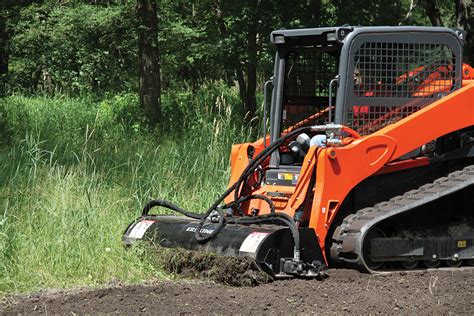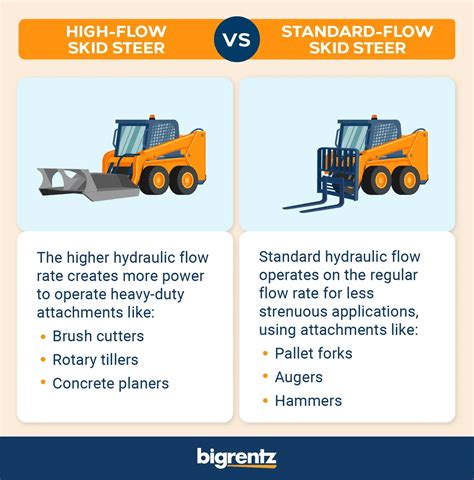what is high flow hydraulics on a skid steer The term high-flow encompasses a wide category of skid loaders with varying .
Whether you're operating a Kubota mini excavator, track loader, or any other type of heavy equipment, we have the right rubber tracks for your machine. Our Kubota rubber tracks, including narrow and wide rubber tracks, feature specialized tread patterns and block patterns to enhance friction and provide excellent traction across different terrains.
0 · hydraulic attachments for skid steer
1 · high flow skid steer vs standard
2 · high flow skid steer specifications
3 · high flow skid steer models
4 · high flow skid steer attachments
5 · high flow hydraulics vs low
6 · bobcat high flow vs low
7 · best high flow skid steer
Rent a mini excavator from The Home Depot Rental for projects that require power, precision, and a more restrained range of motion. Choose from a variety of models with dig depths of up to 11’7” and check availability online.
What sets a high-flow skid steer apart from a standard-flow machine is its .
Learn about high-flow skid steers and their attachments that require more . What is the Difference Between High Flow and Low Flow on a Skid Steer? The . A high-flow auxiliary hydraulics system is a second option that further increases a . High-flow auxiliary hydraulic systems range from 30 to 50 gpm with pressure .
The term high-flow encompasses a wide category of skid loaders with varying .Skid steer attachments’ high flow requirements vary by the type of attachment. For example, .

hydraulic attachments for skid steer
High-Flow Hydraulics. This optional system provides additional hydraulic power to boost . When operating a skid steer there are typically two types of hydraulic systems that are available: high-flow hydraulics and standard-flow hydraulics. Each has its specific functions so it's essential to know the differences, what attachments they're compatible with, and . What sets a high-flow skid steer apart from a standard-flow machine is its significantly higher flow rate — it creates more hydraulic horsepower, allowing the loader to operate heavy-duty high-flow attachments, like stump grinders, mulchers, and cold planers.
Learn why some skid steer attachments, such as drum mulchers, swing arm stump grinders, and severe duty cold planers, need high flow hydraulics. Find out how to calculate hydraulic horsepower and compare different models of high flow attachments. Learn about high-flow skid steers and their attachments that require more hydraulic power for heavy-duty jobs. Find out the benefits, costs and compatibility of high-flow systems and attachments. What is the Difference Between High Flow and Low Flow on a Skid Steer? The main difference between high flow and low flow hydraulics on a skid steer is the amount of hydraulic power they deliver.Low flow systems generally produce around 20 gallons per minute (GPM), while high flow systems can provide 34.9 GPM or more. This increased flow rate in . A high-flow auxiliary hydraulics system is a second option that further increases a skid steer’s versatility and productivity. As with standard-flow, it operates on the same pressures (approximately 3,000/3,500 psi) the main hydraulic circuits operate on.
High-flow auxiliary hydraulic systems range from 30 to 50 gpm with pressure capabilities up to 4,100 psi. At the top end of the spectrum, ASV’s RT-135F forestry CTL offers high flow as standard with a bonkers 50 gpm and a max system pressure of 4,060 psi.
The term high-flow encompasses a wide category of skid loaders with varying flows and pressures. Flows range from 26 to 40 gpm and pressures range from 3,000 to 5,000 psi. The flow in the.Skid steer attachments’ high flow requirements vary by the type of attachment. For example, high flow is required for hydraulic breakers, while low flow is sufficient for most other attachments, such as buckets and augers.High-Flow Hydraulics. This optional system provides additional hydraulic power to boost production of attachments like the Bobcat flail cutter, trencher, planer and stump grinder. Machines with this option have two flow ranges so attachments that require lower flow can still be used by selecting standard flow mode. Control in Your Hands. When operating a skid steer there are typically two types of hydraulic systems that are available: high-flow hydraulics and standard-flow hydraulics. Each has its specific functions so it's essential to know the differences, what attachments they're compatible with, and .
What sets a high-flow skid steer apart from a standard-flow machine is its significantly higher flow rate — it creates more hydraulic horsepower, allowing the loader to operate heavy-duty high-flow attachments, like stump grinders, mulchers, and cold planers. Learn why some skid steer attachments, such as drum mulchers, swing arm stump grinders, and severe duty cold planers, need high flow hydraulics. Find out how to calculate hydraulic horsepower and compare different models of high flow attachments.
Learn about high-flow skid steers and their attachments that require more hydraulic power for heavy-duty jobs. Find out the benefits, costs and compatibility of high-flow systems and attachments. What is the Difference Between High Flow and Low Flow on a Skid Steer? The main difference between high flow and low flow hydraulics on a skid steer is the amount of hydraulic power they deliver.Low flow systems generally produce around 20 gallons per minute (GPM), while high flow systems can provide 34.9 GPM or more. This increased flow rate in . A high-flow auxiliary hydraulics system is a second option that further increases a skid steer’s versatility and productivity. As with standard-flow, it operates on the same pressures (approximately 3,000/3,500 psi) the main hydraulic circuits operate on. High-flow auxiliary hydraulic systems range from 30 to 50 gpm with pressure capabilities up to 4,100 psi. At the top end of the spectrum, ASV’s RT-135F forestry CTL offers high flow as standard with a bonkers 50 gpm and a max system pressure of 4,060 psi.
The term high-flow encompasses a wide category of skid loaders with varying flows and pressures. Flows range from 26 to 40 gpm and pressures range from 3,000 to 5,000 psi. The flow in the.
Skid steer attachments’ high flow requirements vary by the type of attachment. For example, high flow is required for hydraulic breakers, while low flow is sufficient for most other attachments, such as buckets and augers.

high flow skid steer vs standard
Common spare parts that you might need for a second-hand mini digger include filters, belts, hydraulic hoses, bearings, and other replacement parts for the .
what is high flow hydraulics on a skid steer|high flow hydraulics vs low